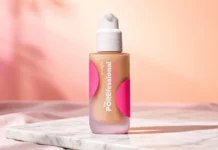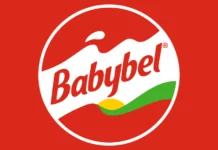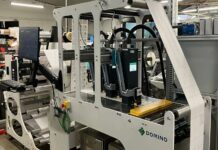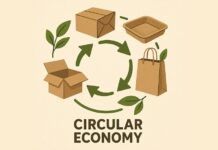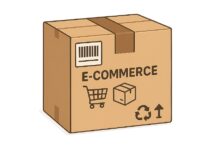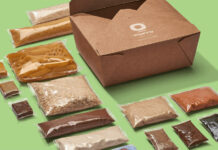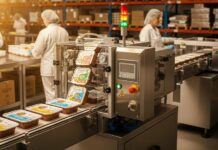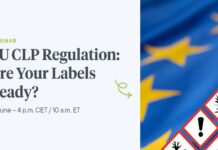Concerns about health, the environment, and consumers’ desire for openness have all come together to drastically change the packing business.
People are more aware of the choices they make as the world deals with the effects of the COVID-19 pandemic and ongoing climate issues.
This includes what they eat, what they use, and most importantly, how these things are packed. Health trends are now driving the need for packing that is not only good for the environment but also clear about what it holds and why it’s there.
How clean labels work and what they mean for packaging
The clean label trend started in food production and is quickly changing how things are packaged. The goal of clean labels is to reassure customers that goods do not contain any fake ingredients, stabilizers, or chemicals.
This demand from customers for natural and simple goods is changing not only what’s inside the package but also how it looks and is packed.
People now want labels that are clear, easy to understand, and list natural chemicals along with information about where the food comes from and how sustainable it is.
This openness gives buyers confidence that the brands they choose are in line with their own values, especially when it comes to caring for health and the environment.
Packaging that makes these ideas clear is becoming very important for products to do well in places where people are becoming more health aware.
Packaging that is good for you and the environment go hand in hand
Concerns about the environment and health tend to go hand in hand, which is why “green” packing options are becoming more popular. It is now necessary to use sustainable packaging, which is made from materials that can be recycled, broken down, or made from resources that can be used again and again.
Eco-friendly packaging is good for your health in two ways: people think that items made in eco-friendly materials are better for their own health and the health of the world.
For example, flexible packaging, which is adjustable and uses few resources, has become popular because it leaves little of an impact on the earth. Brands that use this kind of packing can talk about how fresh and safe their goods are, as well as how they want to reduce waste.
This is especially important as people become more aware of how plastic garbage and too much packaging hurt the earth.
Meeting customer standards through transparency
Today, especially since the outbreak, customers will not settle for less than transparency. People were more concerned about their health because of the pandemic, and they wanted brands to be more honest and open as a result.
People want to know where the goods they buy come from, how they are made, and if the companies that make them follow social and environmental rules. Packaging is a very important part of this process because it lets brands show what they stand for.
Because of this, brands are using new technologies like QR codes and blockchain to give customers more knowledge about where their products come from and how they get to stores.
This level of total openness builds trust by giving customers access to product info in real time. A brand is more likely to gain customer trust if it is open about its ingredients, where it gets its ingredients, and how it makes its products.
The rise of packing made from plants and with health in mind
One more trend that is changing packing is the rising desire for plant-based goods. As plant-based meals become more common because they are thought to be better for your health and the earth, the packing needs to change to reflect this.
Plant-based food packaging often says that the food was made with minimal processing and safe sources, which supports the idea of “clean” eating.
In areas like beauty and personal care, as well as food, this trend of people looking for clean, green goods is growing.
In response, brands are making packages out of natural, recyclable materials instead of chemicals or synthetics that could be bad for the earth or people’s health.
New ideas in packaging for health-conscious buyers
In many ways, the packaging business is coming up with new ideas to keep up with the growing interest in health. To begin, the style of packaging now focuses on lowering the chances of infection.
One example is sealed packing, which is becoming more popular because it keeps products fresh and saves their purity, which people link with better health.
Smart package technologies that check how fresh food is or give real-time information about the product’s state are another trend. People who care about their health and are worried about food safety and going bad can feel better knowing that these tools are in place.
By adding these features, brands can attract customers who care about their health and fitness while also making less of an impact on the earth by using materials more efficiently.
Problems with green and clean packaging
The move toward clear, green, and clean packaging is mostly a good thing, but it does come with some problems.
Cost is a big problem. Sustainable materials are usually more expensive than regular ones, and making clean label goods may cost more because they need more money to be sourced and made.
This cost is sometimes passed on to the customer, which could make it harder for people with smaller incomes to get what they need.
Also, the business is still having trouble with standardization. There isn’t a single agreed upon description of “clean label,” so different brands use it in different ways.
Because of this, it may still be hard for customers to tell which goods really support their health and the world. To address these worries, government agencies and business leaders are trying to make it clearer what “clean” packing really means.
What to remember
Consumers want healthy, more environmentally friendly, and more clear goods, which is causing big changes in the packing world.
As health trends change, packing must also change to keep up. It has to balance the need to be eco-friendly with the need for safety and ease of use.
Brands that can adapt to this changing climate by using clean, green, and clear packaging are more likely to gain the trust and support of health-conscious customers.
The future of packing lies in its ability to show not only how good the product inside is, but also the values that went into making it.




